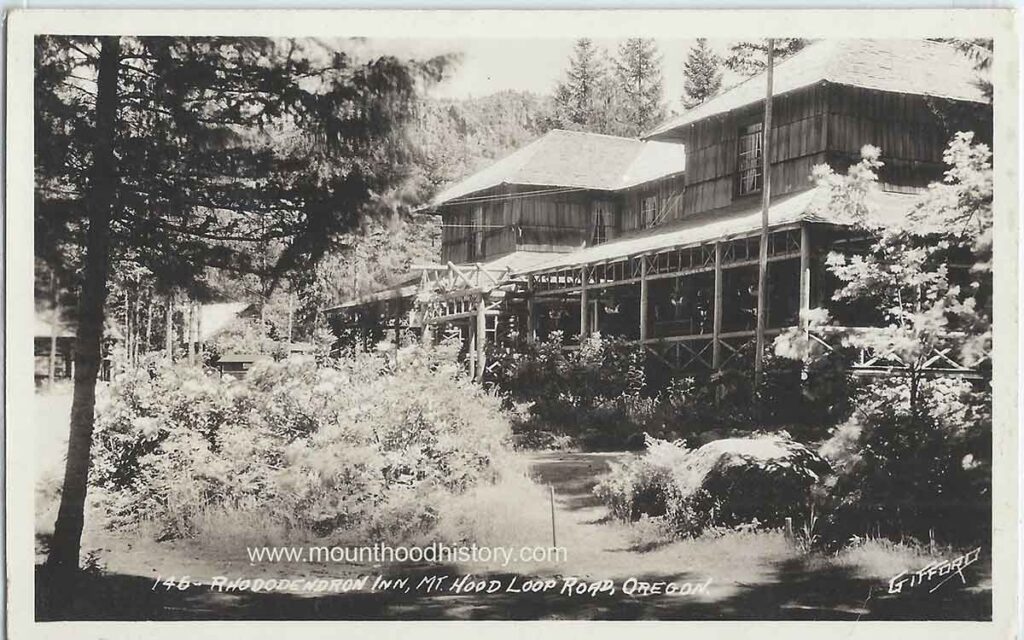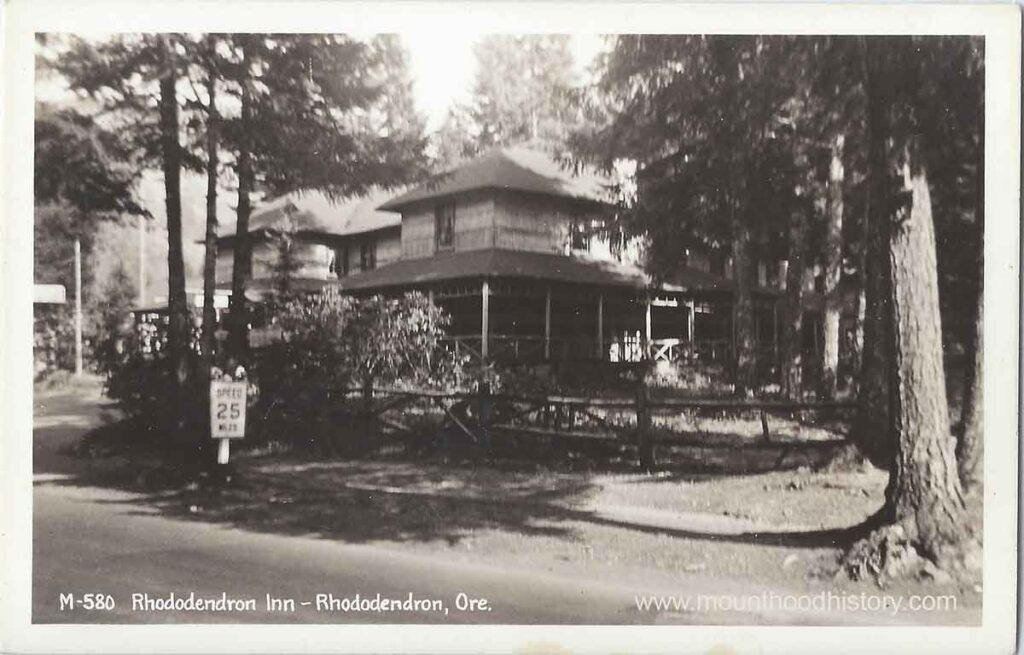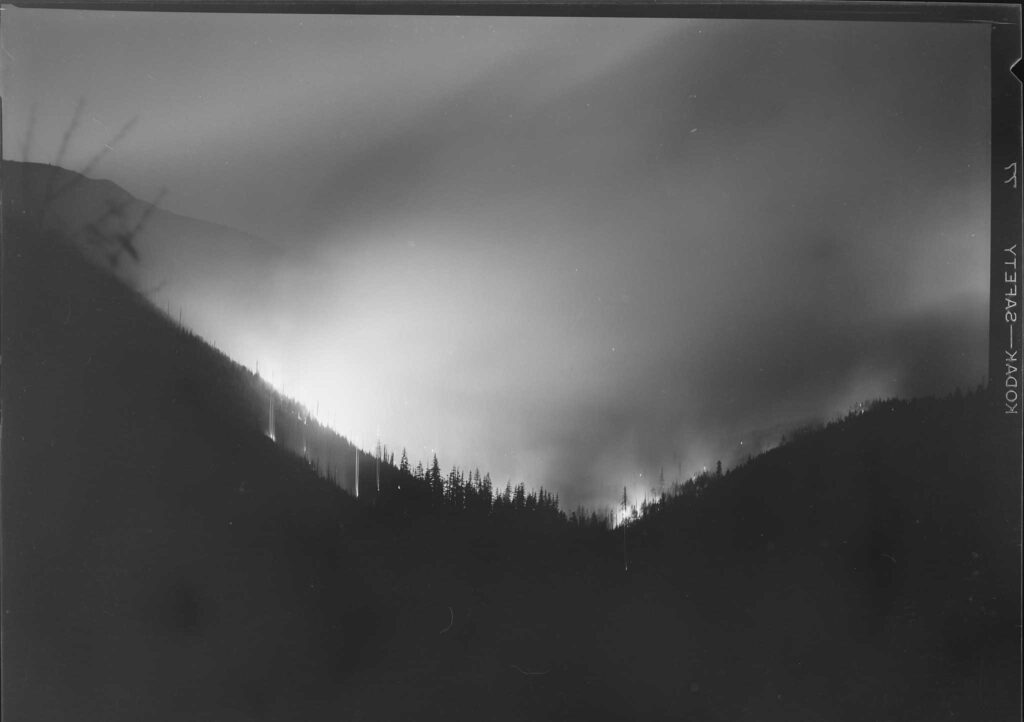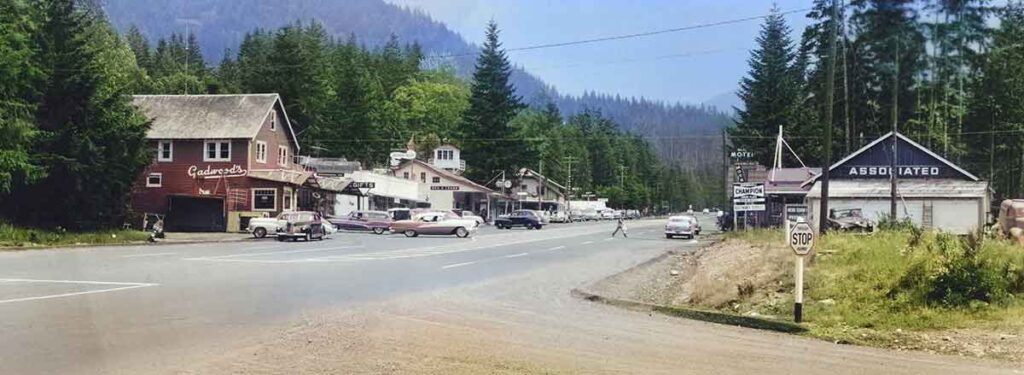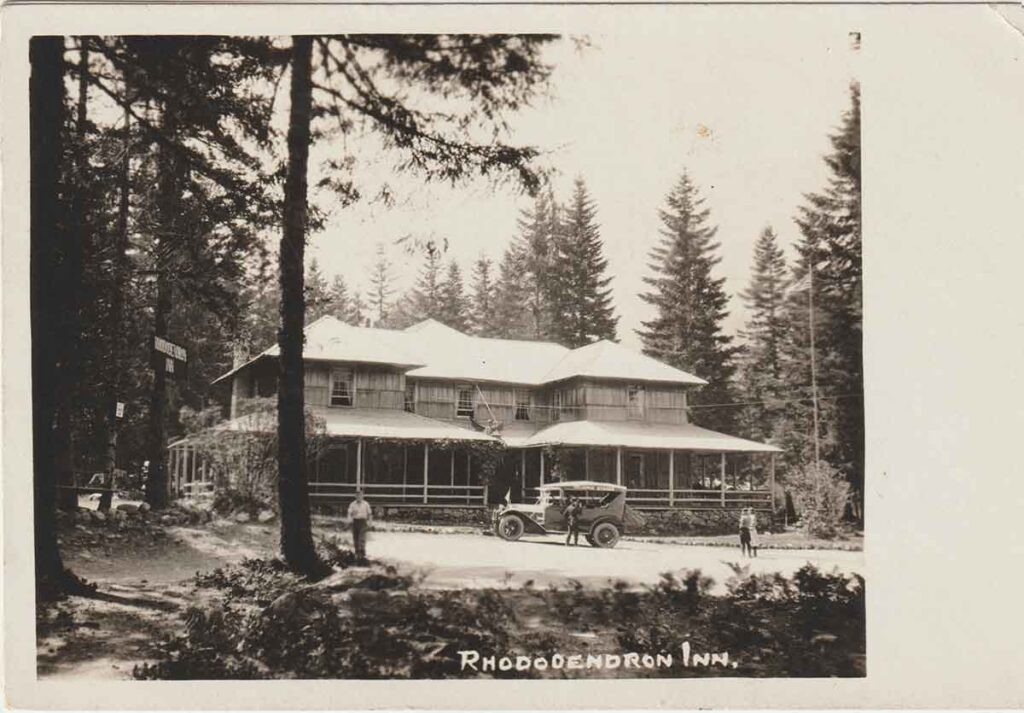Before Rhododendron, Oregon, became a known mountain getaway, Susette Franzetti helped build its identity. A Swiss hotelier with European training, she transformed the area with hospitality, real estate, and resilience.
Tag: rhododendron
Emil Franzetti Rhododendron Inn – Mount Hood’s Gourmet Chef
Before ski resorts dotted the highway and travelers packed the trailheads, Emil Franzetti of the Rhododendron Inn brought elegance and fine cuisine to Oregon’s Mount Hood region.
Fires, Fear, and Fighting Back: The Week the Forest Burned Near Mt. Hood
Late in the season, around midnight on October 13, 1952, trouble began in the dry forests surrounding Mt. Hood.
Rhododendron Oregon Centennial and History
a video to commemorate the 100th anniversary of the little Mount Hood village of Rhododendron Oregon.
The Rhododendron Inn
The Rhododendron Inn: A Lost Landmark of Mount Hood In the early days of travel on the south side of Mount Hood, weary travelers relied on roadhouses and inns for a bed and a meal as they made their way up the old road to the mountain. The roads were rough, and automobiles were slow. … Continue reading The Rhododendron Inn

